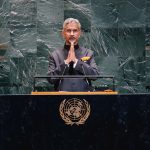
US-China Reach Deal to Ease Export Curbs, Uphold Truce
The United States and China have reached a tentative agreement to ease restrictions on critical exports and extend a fragile tariff truce, following two days of closed-door discussions in London. The breakthrough signals a renewed effort by both economic giants to avoid escalating trade tensions that have simmered for years.
US-China Truce Framework Agreed
At the heart of the new accord is a framework designed to revive the Geneva truce, which had temporarily halted retaliatory tariffs on hundreds of billions of dollars worth of goods. The new agreement now sets August 10 as the deadline for both nations to finalize the framework and avoid the reimposition of punishing duties—some of which could climb as high as 145% on U.S. imports and 125% on Chinese exports.
The talks, led by senior U.S. officials and their Chinese counterparts, focused on easing curbs imposed on both sides during the trade war. Officials from both delegations emphasized that the deal is intended to create a pathway to normalize commercial relations and rebuild trust between the world’s two largest economies.
Rare Earth and Semiconductor Restrictions Addressed
One of the key issues tackled was China’s longstanding restrictions on the export of rare earth elements—materials crucial to U.S. defense, automotive, and electronics industries. In return for easing these restrictions, the U.S. has indicated a willingness to review export controls on advanced semiconductors, aviation technology, and industrial software.
Though both sides stopped short of confirming full-scale rollbacks, negotiators agreed that reciprocal access to critical resources must be ensured to maintain supply chain stability. A senior trade official involved in the negotiations stated that both parties understand the “strategic sensitivity” of the sectors involved and are working toward a mutually agreeable solution.
Markets Cautiously Optimistic
Markets have responded with cautious optimism. While no major financial spikes have been observed, investors welcomed the pause in hostilities as a stabilizing factor amid broader global uncertainty. However, analysts remain wary of long-term prospects given the lack of concrete verification mechanisms or binding commitments in the agreement.
Concerns also linger over unresolved structural issues such as state subsidies, technology transfer mandates, and intellectual property protections. The current deal serves more as a pressure-release valve than a full resolution, buying both sides more time before major economic decisions must be taken.
As the August deadline approaches, the world will watch closely to see if Washington and Beijing can translate this diplomatic detente into a durable trade reset or if this is merely a tactical pause in an ongoing strategic rivalry.


















